JTE - v18n2 - Identifying the Paradigm of Design Faculty in Undergraduate Technology Teacher Education in the United States
Identifying the Paradigm of Design Faculty in Undergraduate Technology Teacher Education in the United States
Scott A. Warner, Laura Morford Erli, Chad W. Johnson, and Scott W. Greiner
Davis, Hawley, Mcmullan and Spilka, in the book Design as a Catalyst for Learning ( 1997 ), repeatedly made reference to the “growing evidence that design is a powerful tool for transforming curriculum and accommodating the variety of ways in which students learn” (p. xiv). This acknowledgment of the importance of design as a means for promoting a diverse learning environment within a dynamic curricular setting has manifested itself through the ideals expressed in the Standards for Technological Literacy (Standards) ( ITEA, 2000 ). This important document has firmly established for the profession of technology education the role of design as a tool for both investigating and developing the technological world.
The research that is documented here is the second part of a multi-year study that is investigating the status of design in the undergraduate experiences of future technology education teachers. These studies were designed to measure the nature of the academic/experiential infrastructure for preparing future technology educators to interpret and use the design process as part of their normal teaching strategies. Each part of this multi-year study was designed to be descriptive in nature. The first part of the study documented the types and numbers of design-focused courses offered at colleges and universities across the United States in technology teacher education programs ( Warner & Morford, 2004 ).
The current study investigated the paradigm of the design faculty in the programs identified in the initial research. This component was designed to provide additional insight into how technology teacher education was being influenced by both the design paradigm and the demographics of the instructors of undergraduate design-focused courses.
Through a cascading effect, the design instructor’s paradigm has broad consequences for both his or her students and the profession. When pre-service technology educators graduate and move into their careers they take with them their own set of design experiences, experiences that were influenced by the design paradigms of their college instructors. Furthermore, as each new generation of teachers enters the profession, their design paradigm also influences the nature of technology education and the broader cultural perception of technological design as they teach that subject to children in grades K-12.
The Purpose for the Research
“Children learn not only the lessons which we try to teach them, but also lessons which by their very nature are perhaps more subtle” ( Kennedy, 2004 , ¶1). This statement by Kennedy summarizes the rationale for investigating the paradigm of design faculty in undergraduate technology teacher education in the United States. The young men and women who are studying to become technology education teachers in the K-12 classrooms of America receive two types of messages from their instructors in undergraduate courses. One type of message is clear and obvious and is brought out in the content of the curriculum, lessons, and activities that are used in a course. The second type of message is subtle and determined by factors that are completely outside of the student’s awareness and control. Goodlad (1984) referred to these subtle messages as the “implicit curriculum” (p. 197). The author defined implicit curriculum as:
One source for the implicit curriculum within the design-focused courses offered to pre-service technology educators originates from the design paradigm of the course instructor. The instructor’s design paradigm includes such shaping events as his or her own education, work experiences, hobbies, technical training, workshops, and conference sessions. These experiences influence how an instructor interprets and interacts with design and technology. They also affect how an instructor teaches undergraduate students, and how those students eventually teach their K-12 classes. The literature provides numerous examples of studies showing that instructors, especially student teachers and teachers who are new in their careers, tend to teach the way they were taught ( Hooper, n.d. ; Lortie, 1975 ; Goodlad, 1984 ; Britzman, 1991 ; Hansen, 1995 ). This behavior pattern is categorized as a component of the processes of teacher socialization. In a summary of the relevant literature on this topic, Zeichner and Gore (1990) (citing the work of Danzinger, 1970), defined teacher socialization as the process of transforming an individual into “a participating member of the society of teachers” (p.329). The process of teacher socialization is especially important to an inexperienced teacher. It helps an individual to begin establishing the infrastructure of his or her teacher identity and the professional and collegial support systems that facilitate the teaching process. With the passage of time and the development of experience in the craft, many teachers eventually move beyond rigid adherence to the models of teaching upon which they patterned their early professional experiences. However, some do not, though all carry with them throughout their career at least residual beliefs, assumptions, and behavior patterns that influence their teaching at a subconscious level ( Lortie, 1975 ; Goodlad, 1984 ; Britzman, 1991 ; Hansen, 1995 ).
Zeichner and Gore’s (1990) review of the literature on this subject of teachers teaching the way they were taught revealed many facets of this behavior pattern. For the purposes of this study, the researchers felt that three of those trains of thought were most relevant. The first line of consideration investigated the influence of individual role models toward shaping a novice educator’s teaching attitude. The second line of consideration explored the influence of institutional factors in shaping and modifying novice teachers’ attitudes and beliefs. The final line of consideration was the influences on novice educator’s attitudes about teaching from other sources.
Over the last several decades the world of technology education has emerged from a transition out of industrial arts. Any major cultural change, such as this, will inevitably result in a period of uncertainty and adjustment for the members of that culture. The transition to technology education has resulted in a number of uncertainties, for both the profession and its practitioners, about the content and the methodologies that should be used to teach about technology. Arguably, the most significant effort to provide clarity and direction toward the study of technology has been the Standards ( 2000 ). The Standards embraced technological design, in its many forms, “...as the core problem-solving process of technological development. It is as fundamental to technology as inquiry is to science and reading is to language arts” (p.90). Such a statement seems rather clear about the importance of the role design should play toward the study of technology. However, the question of the nature of how design itself should be interpreted is still left open. On this matter the Standards sought to address the question with the following passage:
This passage seems to indicate that the approach to design that is exemplified by industrial design would be the most appropriate model upon which the study of technology could be based. The implication is that industrial design synthesizes the best aspects of the analytical approach to design used by engineers with the aesthetic and emotional aspects of design used by the artist. However, using an approach that synthesizes two dissimilar approaches to design may require that technology educators have some amount of background and training in both areas to give the synthesized model its full measure. Further complicating this aspect of determining how design ought to be used to teach technology is the political implications of an alignment with the profession of engineering, the fine arts, or industrial design. Should any of these alignments come to pass each could have significant and long-term implications for technology education as a component of the general education experience of students in the public schools. The background and training of the instructors of design at technology teacher education programs across the United States will be influencing the nature of their design instruction and how the ideals of the Standards are interpreted. These interpretations may then affect, in both subtle and overt ways, the alignments that could occur between technology education and other professions.
The Need for the Research
The need for the study is in response to identified shortages of research in technology education. Furthermore, the study specifically addresses a need for research on design in technology teacher education. Both the purpose and the need for the research were direct responses to literature reviews and the findings from the previous stage of the research project. In addressing the need for this research, earlier work by Warner (2003) and Warner and Morford (2004) found little evidence in the literature on the “specific analysis of the status of the study of design in undergraduate technology teacher programs” (p. 35). To further emphasize the need for the present research, the work by Warner and Morford also identified several studies ( Reed, 2002 ; Lewis, 1999 ; Foster, 1996 ; and Foster 1992 ) that “found declining numbers of research efforts being conducted in technology education” (p.35).
Methodology
The Conceptual Model for the Study
The goal of the present research was to identify the paradigm of the instructors of design-focused courses. A significant conceptual model for doing research with such a goal was originally conducted by Rossman in the 1930s. In 1931, Rossman, a patent attorney, completed a study to determine the common characteristics of American inventors. Rossman conducted his study by surveying over 700 active inventors, almost 200 patent attorneys, and nearly 100 directors of research and development centers. Rossman hoped that by identifying common characteristics of inventors he could provide insight into what separated them from the average man or woman and how their thinking and work habits affected both the individual inventor and those around them. Rossman’s study provided a benchmark toward understanding the characteristics of inventors. Follow-up efforts to his initial study, conducted in the early 1960s, showed that the results maintained their validity ( Rossman, 1964 ).
Limitations
As with the first year of the study, the researchers chose only to identify and then quantify the results of their investigation. The underlying goal of the entire research project was to observe and describe the contemporary status of design as a component of the process of preparing future technology education teachers. In keeping with this goal, the researchers identified and quantified the types of training, experience, and academic background indicated by the survey respondents.
Definitions of Terms
Two terms fundamental to understanding the nature and goals of this study are paradigm and design-focused courses . The first term deals with the underlying forces that influence how a college instructor interprets and interacts with design in technology. The second term deals with distinguishing what courses and course instructors were considered appropriate for inclusion in this study.
According to The American Heritage Dictionary of the English Language (2000) the term paradigm first appeared in print sometime in the 15 th century. Its original meaning had to do with groupings of words that developed from a common root or stem. However, words that are in use are always in a plastic state of existence. The word paradigm is no exception. Kuhn’s book, The Structure of Scientific Revolutions ( 1962 ), though still widely read in the scientific community, is perhaps best remembered for its adaptation of paradigm . Sallo (1999) , summarized Kuhn’s adaptation of paradigm by stating that it meant “a collection of beliefs shared by scientists, a set of agreements about how theories and problems should be understood” (¶ 13). In the succeeding years, as others have used the word to discuss their topics and issues, the meaning of paradigm has continued to expand. Wikipedia (2004) provides a definition that states, “in the social sciences, the term is used to describe the sets of experiences, beliefs and values that affect the way that an individual perceives reality and responds to that perception” (¶ 4). This use of the term paradigm fits the underlying assumption of the researchers that the perception shaping experiences of the college and university instructors teaching design-focused courses have corresponding influences on their students.
The second term to be defined is design-focused courses . In the earlier study by Warner and Morford (2004) the assumption was made that “most, if not all, technology education courses used or contained some component of design” (p. 37). However, the types of courses that were investigated further “were explicitly focused on design techniques or the overall design process” (p. 37). Therefore, design-focused courses were only those that met that filtering criteria.
Subsets of the general definition of a design-focused course were technique courses and synergistic courses. Once again, the earlier study by Warner and Morford (2004) defined these terms. “Specifically, technique-based courses are focused on the technical aspects of design” (p.37). The most common course titles for this subcategory included Computer Aided Drafting, Technical Drafting/Drawing, Architectural Drafting and Design, Engineering Graphics, and Graphic Communications. “Synergistic-based courses combine the technical skills with the overall thinking processes of design” (p.37). The most common course titles for this subcategory included Industrial Design, Design and Technology, Product Design, Research and Experimentation, and Design Problems/Problem Solving.
Assumptions
The researchers revisited the results of the 2002-2003 study and expanded the number of schools included in the original contact pool. The same assumptions (noted in the previous section) regarding the appropriateness of the courses included in the study from the previous year were once again applied. For this study the raw data were collected between the months of August 2003 and January 2004. It was assumed that the responses on the surveys reflected the most up-to-date information for each of the participant’s career experiences.
The researchers assumed that the information provided by the department chairperson, or the designated teacher education representative, concerning who had taught the identified design-focused courses in their program was accurate and complete. Furthermore, it was also assumed that the contact information provided by each program for the identified faculty was current at the time the survey was distributed.
The final and perhaps most important assumption made by the researchers, was that the measures taken for this study were not, and could never be, a total inventory of the design paradigm shaping events experienced by each of the respondents. It was assumed that each individual had a vast array of both major and minor life experiences that played a part in shaping his or her design paradigm. Some, if not most, of those experiences have influenced the individual respondents in ways that he or she was not even aware of at a conscious level. Therefore, the events that the researchers inventoried were only those that could be clearly identified by the respondents and which could be consciously planned for, modified, or updated by any individual as the need arose.
Research Questions
The researchers came into this stage of the project with a number of questions that were an outgrowth from the 2002-2003 study. The organization of the research questions fell into two categories that were not mutually exclusive. The two categories of initial questions were (a) What was the updated status of design courses in undergraduate technology teacher education, and (b) What were the demographics and design backgrounds of the instructors of those courses? Within each of these two categories there were a number of sub-questions that were asked by the researchers. These sub-questions included:
- How many viable technology teacher education programs exist in the United States?
- What is the status of design courses at these programs?
- What is the gender profile of the instructors of design-focused courses?
- What is the formal education profile of the instructors of design-focused courses?
- When did the instructors of design-focused courses earn their various degrees?
- Are there any geographic patterns to the college degrees earned by the instructors of design-focused courses?
- What were the final undergraduate majors of survey respondents when they received their bachelor’s degrees?
- What were the final undergraduate minors of survey respondents when they received their bachelor’s degrees?
- If the respondent had changed majors, what had been his or her original program of study?
- What types of post-graduate training in technological design had the respondent received over the course of his or her career?
- What types of industrial/private sector experiences in technological design had the respondent received over the course of his or her career?
- What other types of design-focused experiences had the respondent received over the course of his or her career?
Data Collection
The organization and conduct of the study occurred in several phases. The first phase involved the identification of the processes and procedures, the creation of the survey instrument and its accompanying documents, and the development of an anticipated timeline. These fundamental tasks were completed by August 2003.
The second phase was the identification of programs that had not been included in the previous study. This was accomplished by an analysis of the program listings from the 2002-2003 Industrial Teacher Education Directory ( Bell, 2002 ). The researchers compared the list of programs from the previous study against the programs in the Directory that indicated they offered some type of an undergraduate technology teacher education program.
The third phase used the expanded list of programs to replicate the previous year’s study and identify and quantify the design-focused courses offered in the additional programs. This involved using the Web as the primary resource for identifying each program’s course offerings. Once that step had been completed and the courses had been filtered by the researchers for evaluation as having design-focused content, the department’s chairperson or an identified technology teacher education representative, was contacted. This contact provided the opportunity, based on input from the identified program representative, for adjustment of both the list of programs to include in the study and the list of design-focused courses.
The fourth phase of the study involved contacting the department chairperson or the designated representative, and soliciting the contact information of the faculty members who had taught the identified design-focused courses anytime between 1999 and 2003. This contact also provided the chairperson or program representative with copies of the material to be sent to their faculty (i.e., a faculty cover letter, an informed consent document, and the survey instrument). If they chose to participate in the study they were asked to complete a design course/faculty grid sheet requesting the name, e-mail address, and office telephone number of the instructors for each of the identified courses within their program. The researchers made three attempts at contacting each of the program representatives before excluding a program from the study.
The fifth phase of the study involved contacting each of the identified instructors and soliciting their participation. The first contact was by e-mail and contained a cover letter that explained the research project, the informed consent document, and the survey instrument. If necessary, a follow-up contact was also made by e-mail. The third and final contact was made by telephone before a faculty member was excluded from the study. The questions on the survey asked the participants for information that could primarily be gleaned from their professional vitae. The questions were designed to gather both general demographic information and information about the respondent’s design paradigm. The research participants were given the option of returning their completed survey instruments as e-mail attachments, facsimiles, or as printed copies through the regular mail.
The sixth and final phase of the study involved the collection, categorization, and quantification of the data. A coding system was used to provide a high degree of confidentiality about the specific answers of individual respondents. Because the goal was to examine the typical characteristics of instructors of design-focused courses, the researchers placed individual responses to each question into a database of common categories. The results were then used to create a profile of a typical instructor of design-focused courses in undergraduate technology teacher education.
The Results of the Research
Based on a thorough analysis of the listings in the 2002-2003 Industrial Teacher Education Directory ( 2002 ), the researchers were able to ascertain that at that time there were 72 undergraduate technology teacher education programs listed for colleges and universities in the United States. The researchers compared that list against the list of 58 schools that were included in the 2002-2003 study. The schools not in the previous study were then evaluated for design-focused courses and the department chair or the designated teacher education representative was contacted for input into the study. The results of this first stage of investigation found that four of the programs were either in the process of closing down or were essentially defunct since the program had not had a technology teacher education graduate in at least the previous five years. At this point in the study the population was 68 schools ( n = 68). The next process of soliciting input and participation from department chairs resulted in positive returns from 53, or 78%, of the programs.
The replication of the previous study with the inclusion of the courses from the additional programs found 312 design-focused courses at the 53 participating schools. These courses were then categorized as either technique or synergistic. The required courses numbered 103 technique-based courses and 34 synergistic-oriented courses. The researchers were able to identify 164 ( n = 164) instructors of design-focused courses, both technique and synergistic based, at the 53 programs. The number of individual instructors who responded to the survey instrument was 45, or 27% of the 164 originally contacted.
The findings for the demographics of the respondents started with the issue of gender. Forty of 45 respondents, or 88% of the population, were male and five respondents, or 12%, were female.
The types of undergraduate degrees earned by the group were principally the bachelor’s of science or bachelor’s of science in education categories (see Figure 1). The same pattern continued in graduate school with a majority of the degrees being master’s of science and master’s of science in education (see Figure 2). These results should not be surprising. The technical nature of preparing someone to teach in industrial arts, industrial technology education, technology education, or any of the other permutations of this field would tend to lean toward this type of program of study. The California State University, Los Angles (n.d.) academic advisement service explains the difference as follows:
At the doctoral level, 56%, of the respondents reported doctor of philosophy (Ph.D) degrees compared to 43% with doctor of education (Ed.D) degrees. One respondent had a doctorate of industrial technology (D.I.T.), and three others were at various stages of completing degrees (see Figure 3).
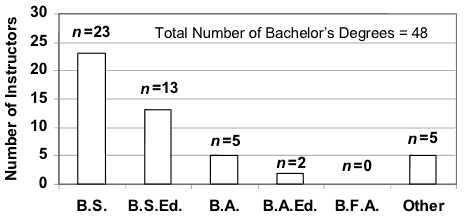
Figure 1 . The number and types of bachelor’s degrees identified.
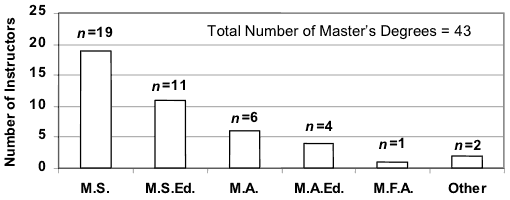
Figure 2 . The number and types of master’s degrees identified.
The time frame in which the respondents received their college degrees ran across nearly a forty-year spectrum during a period of dynamic change within the profession. The years that bachelor’s degrees were granted ran from 1962 to 1999, with the median year being 1979 (see Figure 4). Master’s degrees were granted from between 1966 and 2002, with the median year being 1985 (see Figure 5). Doctoral degrees were granted between 1971 and 2003, with the median year being 1991 (see Figure 6).
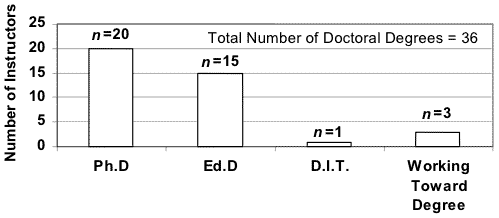
Figure 3 . The number and types of doctoral degrees identified.
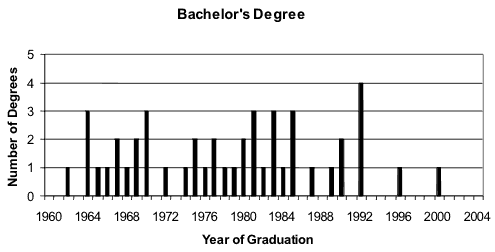
Figure 4 . The year in which an instructor earned a bachelor’s degree.
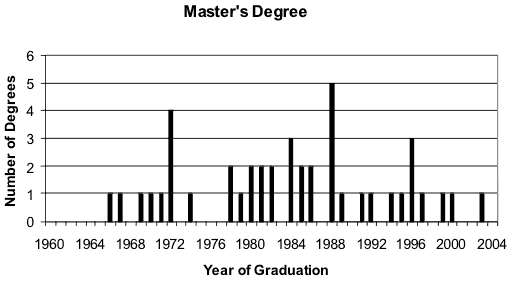
Figure 5 . The year in which an instructor earned a master’s degree.
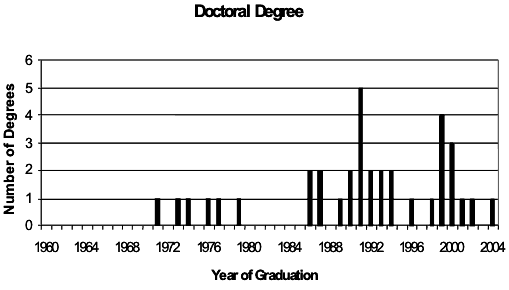
Figure 6 . The year in which an instructor earned a doctoral degree.
The geographic distribution of the schools where the respondents received their various degrees is, for the most part, across the continental United States. The maps in Figures 7, 8, and 9 show the distribution of degrees granted to respondents of the survey by the state in which the granting institutions were located. With the notable exception of the western states, the geographic distribution maps indicate that the respondents received their college educations from programs across most of the country. One consequence of this type of distribution is that no one program, state, region, or agency had exclusive influence on how these respondents were educated about their content areas, including design. The noticeable lack of degrees, of any type, being granted from programs west of the Rocky Mountains, and the small number of degrees coming from any programs west of the Mississippi River, raised a number of questions. These findings may be a statistical anomaly, or they may indicate issues that are related to the distribution of industrial arts/technology teacher education programs over the last four decades, or they may indicate regional differences toward the interpretations of the content area.
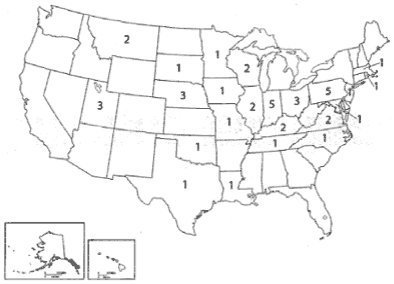
Figure 7 . The geography of bachelor’s degrees.
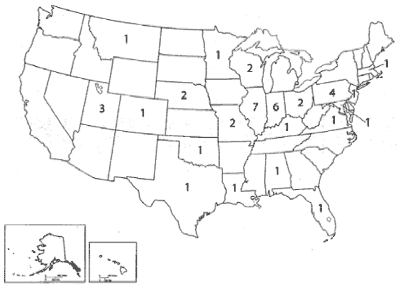
Figure 8 . The geography of master’s degrees.
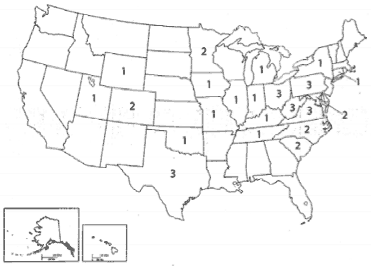
Figure 9 . The geography of doctoral degrees.
The types of undergraduate majors of the respondents represent an interesting range of subject areas. As might be expected, the predominant majors were industrial arts education, industrial education, and various technology fields. However, a significant number of degrees were earned in areas such as art, the humanities, and other disciplines such as architecture (see Figure 10). It is also interesting to note that two of the bachelor’s degrees were granted in technology education, perhaps indicative of representatives of the first generation of technology teacher educators who have been trained entirely under the technology education title.
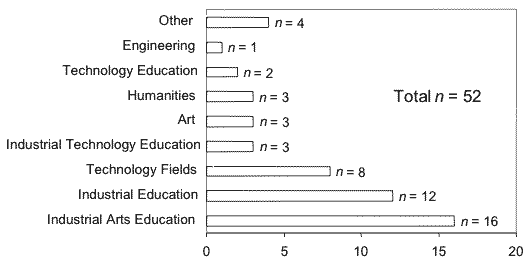
Figure 10 . Undergraduate majors of survey respondents.
Table 1 provides a list of the types of undergraduate minors of the respondents. Like the variety of undergraduate majors among the respondents, this list also covers a very wide spectrum of subject areas. It is notable that only two of the categories of minors have more than one respondent. One was industrial education with two responses and the other was history, also with two responses. Just as notable was that only one respondent had a minor in design. The wide variety of minors prevented the researchers from being able to pinpoint any identifiable pattern from this particular finding.
| Art History | Mathematics |
| Business Education | Mechanical Engineering |
| Design | Packaging Technology |
| Electrical Engineering | Philosophy |
| Electronic Technology | Photography |
| Fine Arts | Physical Education |
| History (2) | Physical Science |
| Humanities | Physics |
| Industrial Education (2) | Technical Sales |
| Management |
A similar question on the survey asked if the respondent had been enrolled in another type of program of study before becoming an industrial arts/technology teacher education major. Just over one-quarter of the respondents had in fact changed their major at least one time when they were undergraduates. Half of those who had changed majors had been engineering students prior to entering an industrial arts/technology teacher education program (see Figure 11).
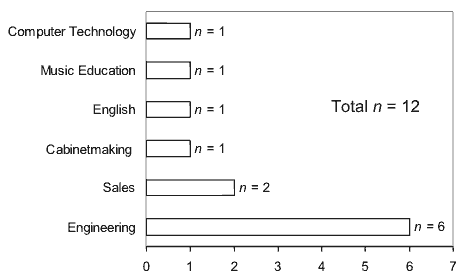
Figure 11 . Former undergraduate majors for survey respondents.
| Description | Responses | ||
|---|---|---|---|
| Courses/Mini Courses/Long Format Workshops | 19 | ||
| Professional Development | 8 | ||
| CADD | 5 | ||
| Design Focused | 4 | ||
| Electronics | 2 | ||
| Industrial Related Training | 8 | ||
| Architectural/Construction/Landscaping | 7 | ||
| Independent Study | 1 | ||
| TOTAL | 35 | ||
The final education related category on the survey involved the types of post-graduate training, specifically related to technological design, that the respondent had experienced over the course of his or her career. The researchers were trying to identify what types of formalized training, received after the completion of the undergraduate degree, may have shaped the design paradigm of the respondents. Examples included full classes that were not applied toward a degree, apprenticeships in a trade, or a summer internship. Table 2 shows the results grouped into four general categories. The most common post-graduate training for this population was through courses, mini-courses, and long-format workshops. Table 2 also shows this specific category expanded into four sub-categories. The second general category of industrial related training involved the respondents’ learning technologically-based skills and knowledge on topics such as machining, model and prototype development, and specialized training for projects with the military. The third category of architectural/construction/ landscaping involved the respondents learning skills related to the design and fabrication of architectural structures and their surrounding environments. Finally, one respondent took a trip overseas to do an independent study of design in the culture, schools, and universities of Great Britain.
| Description | Responses | |
|---|---|---|
| Architecture/Construction/Landscaping | 20 | |
| Trades and Crafts | 11 | |
| Engineering Based Activities | 11 | |
| Publications and Graphic Design | 9 | |
| Invention and Product Design | 5 | |
| Drafting and CADD Related Work | 4 | |
| Teacher/Instructor in Another Subject Area | 4 | |
| Other | 5 | |
Another question series on the survey asked about industrial/private sector experiences that the respondents may have had during their careers that focused on technological design. Examples that were provided on the survey as cues included consulting with engineers, developing an invention, working as a draftsperson, making models for an architect, designing crafts to sell at fairs, and other types of design-focused activities. Table 3 provides a list of the types and numbers of responses received for these questions.
The final category of questions asked about other types of experiences that focused on technological design. Examples that were provided included traditional seminars, workshops, and training sessions that ran from less than one day to no more than one week in length. Table 4 provides a list of the types and number of responses received for these questions. The researchers found it interesting that the most recent emphasis in this category by a significant number of respondents was on training and updating on computers and computer software. One possible interpretation for this finding is that there is an increasing use of the computer as a tool for teaching in all areas including design.
| Description | Responses | ||
|---|---|---|---|
| Computer Software and Hardware Training | 20 | ||
| Conferences/Seminars/Workshops | 15 | ||
| Education Related Experiences | 13 | ||
| Graduate Studies/Research/Teaching | 9 | ||
| Curriculum/Program Development | 4 | ||
| Industrial Experiences | 4 | ||
| Hobbies | 2 | ||
| TOTAL | 54 | ||
Conclusions
This research provided a snapshot of the characteristics of the instructors of design-focused courses at a given point in history. Based on the responses of the participants, it can be concluded that the typical instructor for the design-focused courses offered in undergraduate technology teacher education:
- Is male
- Received his Bachelor of Science degree in 1979
- Received his Master of Science degree in 1984
- Received his doctorate in 1991
- Was likely to have earned a doctorate in philosophy (Ph.D.), if he had a doctoral degree
- Was originally trained in industrial arts education
- Has a strong background in architecture and construction
- Has attended a number of seminars/workshops/training sessions through the course of his career, most recently emphasizing updates on computer related issues.
This profile provides the answer to the basic question: what is the paradigm for the typical design faculty at technology teacher education programs across the United States? If the findings from this sampling, with its emphasis on architecture and construction, are indicative of the entire population, then it signals a paradigm disconnect from the current efforts within the profession to align with engineering. Such a paradigm disconnect among the instructors, unless addressed through professional development, will have consequences for students they serve and the profession in general. It is important to remember that the influences exerted on pre-service technology educators on how they interpret technological design will continue to have consequences for the profession at all levels of education for decades to come.
At the same time, it can be reasonably assumed that future generations of college and university instructors will have different paradigms as the ideals of the Standards shape and influence their understanding and use of the concepts of technological design. Toward that end, the current findings raise a number of intriguing questions. These questions include: (a) What, if any, role does the gender of the instructor play in teaching about design?, (b) How does a degree in science versus a degree in other areas such as fine arts affect the way an instructor interprets design?, (c) Does the industrial arts paradigm differ that much from the technology education paradigm when it comes to interpreting design?, (d) Why does there appear to be such a strong emphasis in architecture and construction among this group of instructors?, (e) How does this strong emphasis on architecture and construction affect the way that design is interpreted by these instructors and what are the consequences for their undergraduate students?, (f) How does the strong background emphasis on architecture and construction affect the way that other aspects of technological design, such as industrial design and engineering design, are interpreted and taught?, (g) What types of professional development opportunities, in the area of design in general and technological design in particular, are most appropriate for these instructors?, and (h) What type of design-focused content is most appropriate for inclusion in these professional development opportunities?
The answers to these questions, and the answers to other questions that will precipitate from those findings, will undoubtedly provide a clearer understanding of how design and design instruction is interpreted and how that interpretation influences the study of technology at all grade levels.
Recommendations
Identifying and quantifying this data is only the first step. Future work on this matter could take several directions. The first direction could be to replicate the study and refine the processes and procedures used to collect the data. As an example, similar research could be done using different methodologies to contact and question the department chairpersons and the instructors. The use of web-based survey instruments may be a more effective way to obtain a larger sampling of the population. Furthermore, a lack of similar research reported in the literature on this particular population means that these findings are benchmarks. Therefore, similar research could be done in the future to measure changes in the instructor profile. With the passage of time and the changing of design paradigms with successive generations of technology educators, it can be assumed that there will be some type of change in this profile.
A second direction these inquiries could take is an analysis of what these findings mean. As noted in the previous section, the current findings provide a list of questions related to the interpretation of the data. As a result, studies could be done that will try to answer each of these specific questions that deal with the analysis and interpretation of the findings from the present study.
A third direction for future research would be to explore the infrastructure that enables design to be taught in undergraduate technology teacher education programs. Examples of this type of study could include determining (a) the typical instructional strategies used to teach design-focused courses, (b) the typical instructional resources used to teach design-focused courses, and (c) the types of classroom/lab environments that best facilitate the instruction of a design-focused course.
These findings provide one more piece of knowledge toward understanding the nature of how pre-service technology educators are prepared to interpret and use design toward the study of technology. The challenge from these findings, to the profession, its individual members, and the researchers as they continue with this research agenda, is to investigate this matter further and to apply the findings toward creating opportunities for the well-rounded preparation of future technology educators.
References
American Heritage Dictionary of the English Language (4 th ed.). (2000). Paradigm . Retrieved November 14, 2004, from http://www.thefreedictionary.com/paradigm
Bell, T. (Ed.). (2002). Industrial teacher education directory (41 st ed.). Millersville, PA: Millersville University of Pennsylvania, Department of Industry and Technology, CTTE and NAITTE.
Britzman, D. (1991). Practice makes practice: A critical study of learning to teach . Albany, NY: State University of New York Press.
California State University, Los Angles (n.d.). What is the difference between our B.A. and B.S. degrees? . Retrieved July 12, 2006, from http://www.calstatela.edu/univ/advise/bb/Advisement_process/dgr7.htm
Davis, M., Hawley, P., Mcmullan, B. & Spilka, G. (1997). Design as a catalyst for learning. Alexandria, VA: Association for Supervision and Curriculum Development.
Foster, W.T. (1996). A research agenda for technology education. The Technology Teacher, 56 (1), 31-33.
Foster, W.T. (1992). Topics and methods of recent graduate student research in industrial education and related fields. Journal of Industrial Teacher Education, 30 (1), 59-72.
Goodlad, J. (1984). A place called school: Prospects for the future . New York: Mcgraw-Hill.
Hansen, R. (1995). Teacher socialization in technology education. Journal of Technology Education, 6 (2), 34-45.
Hooper, T. (n.d.). P.E. teachers teach the way they were taught: Asset or handicap? Retrieved October 31, 2004, from http://www.educ.uvic.ca/Faculty/thopper/Cupr/Archived\waytaught.htm
Kennedy, R. (2004). Influential teachers: Never underestimate a teacher’s influence . Retrieved on October 31, 2004, from http://privateschool.about.com/library/weekly/aa042400a.htm
Kuhn, T. (1962). The structure of scientific revolutions . Chicago: University of Chicago Press.
International Technology Education Association (ITEA). (2000). Standards for technological literacy: Content for the study of technology . Reston, VA: Author.
Lewis, T. (1999, Spring). Research in technology education – Some areas of need. Journal of Technology Education, 10 (2), 41-56.
Lortie, D. (1975). School teacher: A sociological study . Chicago: University of Chicago Press.
Reed, P. (2002). Research in technology education: Back to the future. Journal of Technology Education, 13 (2), 68-72.
Rossman, J. (1964). Industrial creativity: The psychology of the inventor (3 rd ed.). Hyde Park, NY: University Books.
Salo, T. (1999, Fall). Brother, can you paradigm? Trendy vocabulary word makes editors cringe (National Crosstalk, The National Center for Public Policy and Higher Education). Retrieved November 14, 2004, from http://www.highereducation.org/crosstalk/ct1099/voices1099-sallo.shtml
Warner, S. (2003, December/January). Teaching design: Taking the first steps. The Technology Teacher, 62 (4), 7-10.
Warner, S., & Morford, L. (2004). The status of design in technology teacher education in the United States. Journal of Technology Education, 15 (2), 33-45.
Wikipedia (2004). Paradigm . Retrieved November 14, 2004, from http://en.wikipedia.org/wiki/Paradigm
Zeichner, K., & Gore, J. (1990). Teacher socialization. In W. Robert Houston (Ed.), Handbook of research on teacher education, (pp. 329-348). New York: Macmillan.
____________________
Scott A. Warner ( scott.warner@millersville.edu ) is Assistant Professor in the Department of Industry and Technology at Millersville University of Pennsylvania. Millersville, Pennsylvania. Laura Morford Erli ( laura@mcerli.com ) is a Technology Education Teacher at East Side Middle School , Anderson, Indiana. Chad W. Johnson ( cwjohnson2@gmail.com ) is a Technology Education Teacher at West Washington Junior /Senior High School , Campbellsburg, Indiana. Scott W. Greiner ( sgreine@searshc.com ) is a Management Trainee, Sears Holding Corporation , Hermitage, Tennessee.